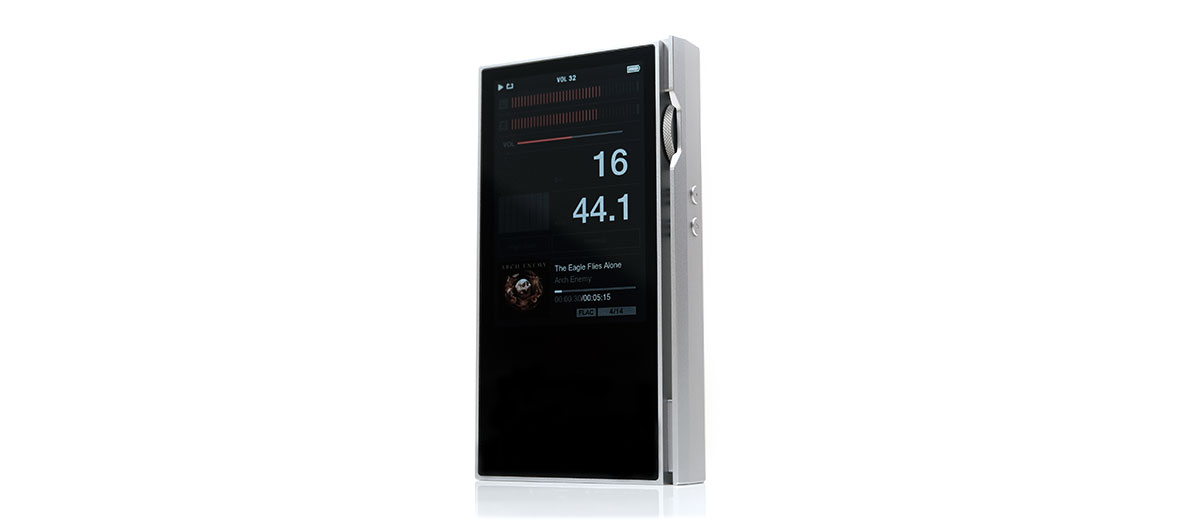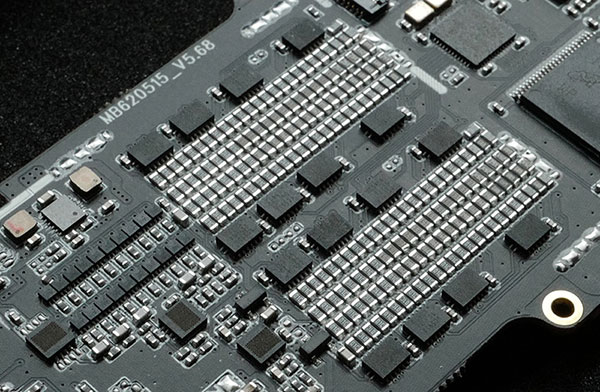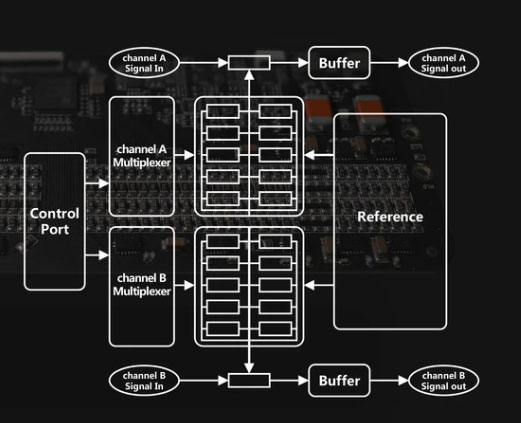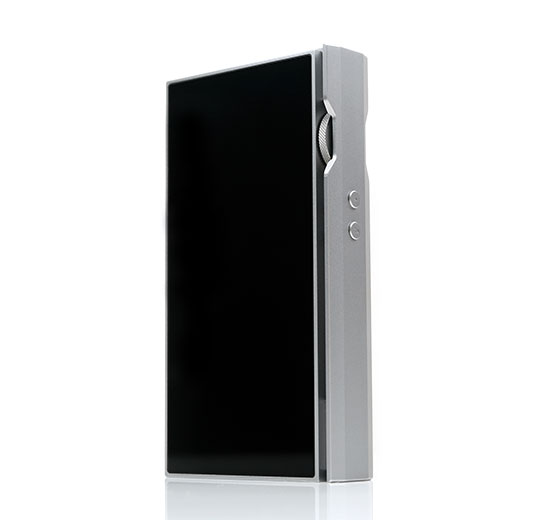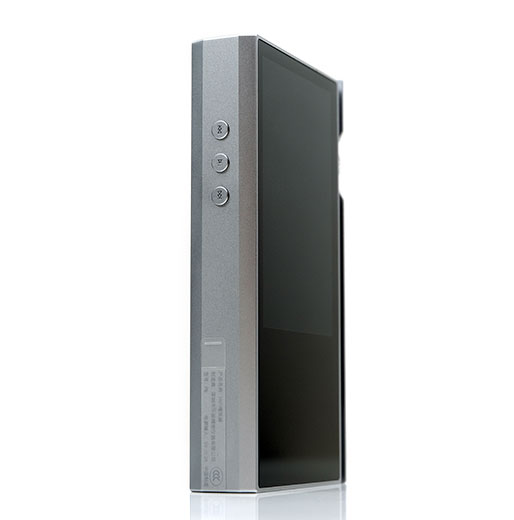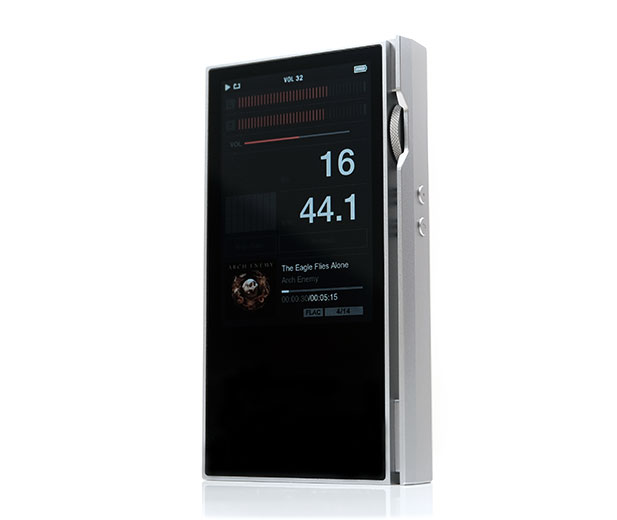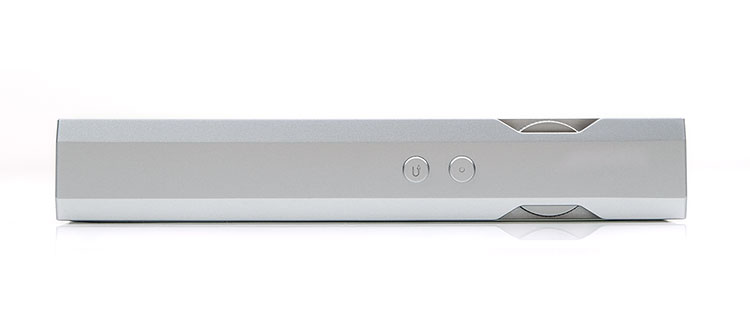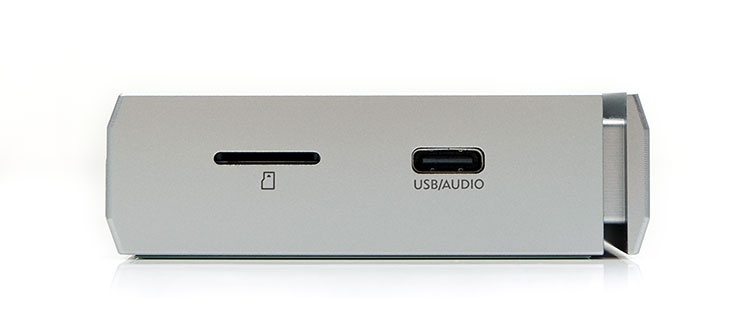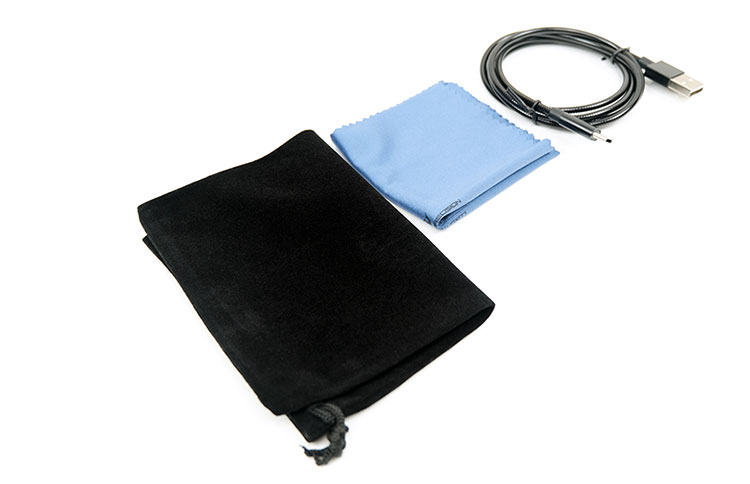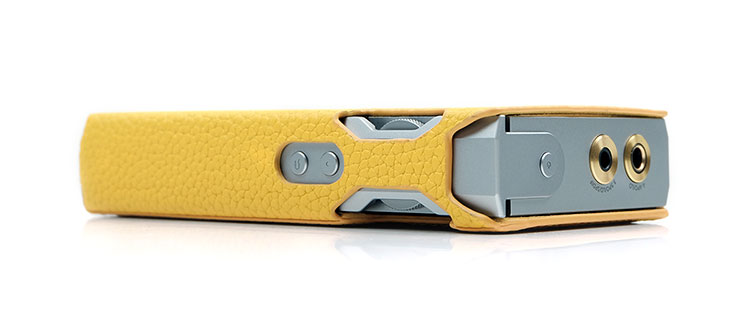The Luxury & Precision P6 is a high-end digital media player featuring a fully discreet R2R DAC implementation with Bluetooth connectivity. It is priced at $2999.
Disclaimer: The Luxury & Precision P6 was sent to us as a sample in exchange for our honest opinion in this review. We thank Luxury & Precision and Musicteck for this opportunity.
To learn more about Luxury & Precision reviews on Headfonics you can click here.
Note, this review follows our new scoring guidelines for 2020 which you can read up on here.
For some audiophiles, a ladder DAC type solution, or R2R as it is popularly known, is the holy grail of DACs. The natural almost analog sound does funny things akin to vinyl lovers changing out their cart and tonearm.
Unit recently, portable audio crowds would have to go desktop to get their R2R fix with the likes of Schiit’s Yggdrasil or for those in the know, Holo Audio’s Spring DAC. Not the most expensive in the desktop world but certainly not portable either.
Hifiman kicked it all off last years by introducing the R2R2000, a portable PCM1704k-infused R2R streaming device which most used as a DAP anyhow. They then doubled down just a few weeks ago with their even better sounding portable DAC/Amp, the HM1000, another PCM1704k portable creation with up to 4 of them in one cassette type form factor.
Now, Luxury & Precision have upped the ante with their fully discreet R2R P6 DAP. Unlike Hifiman, this one is definitely being pitched as a pure DAP.
Tech Inside
Resistor-based DACs
The P6 does not use a delta-sigma or a multibit DAC chipset, instead, it uses a class R2R design in a fully discreet digital implementation.
The ‘regular’ DAP you tend to use and abuse is likely to be using a delta-sigma or multibit DAC with callsigns such as Sabre or AKM. Both options deliver excellent but different listening experiences but from an engineering angle, going 100% discreet means you are 100% in control of the implementation.
Delta-Sigma is traditionally an all-in-one solution, a jack-in-the-box design to take a lot of the legwork from a company’s R’n’D budgets and reduce costs.
Parameters for delta-sigma adjustment are usually limited until you get to the analog side where opamps, rollable or otherwise, can take up the slack and introduce whatever flavor you like to the sound. Some, like Burson Audio, go a little further by diverting some delta-sigma duties such as I/V to discreet opamps which is more of a hybrid solution.
Discreet Engineering
LP goes the whole hog with a fully discreet design for the P6 just like a full desktop traditional R2R DAC. This means a ton of tiny resistors all individually mapped out with specific engineering requested processing parameters to convert the digital signal to analog in the exact way they want it to be done.
It is more time consuming than delta-sigma but the offshoot is generally always a more natural sound that is free of artifacts or ringing, especially in the higher frequencies.
The drawback is that the high number of resistors required to deliver that means a physical challenge in PCB engineering. Simply put, it’s a lot harder to fit 100’s of them into a typical DAP-sized housing compared to a single delta-sigma chipset. Not just any 100, but 100 with precisely matching parameters so that each one does not become the entire P6 DAC’s weakest link.
Decoding
Now, R2R designs have been knocking around for years with many fans addicted to what they perceive as a tremendously addictive natural sound signature.
However, the P6 does have some limitations when it comes to decoding offering a max 32BIT/384kHz PCM and DSD256 whereas modern delta-sigma DAPs reach up to 786kHz sampling and DSD512. It will also handle SACD ISOs which is important for some, including me.
How much value you put into DSD512 capability is entirely up to you. The vast majority of commercially available material is 24BIT/192kHz PCM and DSD64/128 maximum so while future-proofing is more limited, the here and now is 100% relevant.
Volume Control
You might hear companies refer to volume in the analog domain as being preferable to the digital domain. Purely digital volume control can have trouble with dynamic range and noise at lower volume levels.
Often this is countered by stepped or carbon film attenuation control designed to suppress the noise floor. However, oxidization can occur leading to a gradual increase in noise overtime on carbon films, (my no 1 pet peeve with amps), and stepped attenuators make little sense on sensitive gear where precision alps style movement is required.
One popular solution is to move the volume to an independent volume control chip in the analog domain, typically a PGA 2311 used by the like of Cayin. LP contends this still leaves a bit of noise in the signal path and can reduce SNR as a result.
LP’s solution with the P6 is an electronic relay array which is normally not recommended in desktop solutions given they tend to produce high voltage swings.
This is less of a worry for a DAP that sits under a 10V swing so they do not need to revert to a huge mechanical relay construction for the P6. The end result is less noise and better dynamic range through a much lower signal attenuation.
Amplification
Although not the gut-wrenching levels of the HiBy R8’s 1W of output power, the P6 is a very respectable performer with a balanced output rating of 700mW into a 32Ω load. That should cover most headphones, even high-end planars with moderate sensitivity levels such as the Final D8000 Pro and Audeze’s LCD-1.
Unbalanced is 180mW into 32Ω which I am actually quite happy about. It is not the highest I have seen with some competing DAPs offering up to 500mW into the same load such as the Lotoo PAW Gold Touch. However, this is still quite a sensible range for sensitive monitors that could kick up a fuss with higher noise floors.
There is lineout also though both the 4.4mm LO and 3.5mm LO are single-ended in design but with a switchable voltage at 1.55V and 2.45V. My suggestion is to go with 2.45V with decent desktop amps. It will sound punchier and you will not find yourself having to push up the volume as much.
Both outputs are well under 0.5Ω, (0.2 for 3.5mm and 0.4mm for 4.4mm) so the risk of impedance skew is virtually nil on the P6.
Performance Numbers
Speaking of noise, the P6 numbers are excellent with an SNR of around 123dB or higher balanced and unbalanced.
That is the same performance level as the Lotto PAW Gold Touch unbalanced and around 4dB less going balanced. The P6 certainly performs better than the Hifiman R2R200 Black version for SNR which is rated at 115dB.
The P6 also offers 4-5dB more dynamic range than the R8 but like the Hifiman R2R2000, the THD+N numbers are just so so at 0.003% @32ohm load compared to 0.006%. Compare that to Lotoo at 0.00015% for balanced and it is not a fair contest.
That should not be too surprising given that delta-sigma chips post-modulation tend to always look better on single sine wave testing setups.
Design
Of course, beauty is in the eye of the beholder but I happen to think the P6 housing design is minimalistic gorgeous. There is nothing overly busy or fussy in its presentation just some beautiful machining.
There is a matching front and back black glass panel aesthetic, plenty of complimentary straight lines, and a very sturdy and attractive extended protection guard on the right panel. The potentiometer has a nice grippy texture with a tiny but assuring click action during rotation.
The jack ports have a sold gold-plated ring finish to the top just slightly above the main panel whereas slots on the base are completely flush. Physical buttons on each panel are small but with zero slack or looseness. They are also very quiet in their mechanical action and responsive.
The form factor is just the perfect DAP size for single-hand use albeit a bit on the thick side but understandable given it has to safely house a ton of resistors.
At 248g it is not the lightest DAP out there with the R2R2000 coming in at just 142g. However, compared to alternative flagship DAPs such as the Lotoo PAW Gold Touch at 275g and Sony’s 1Z flagship well over 400g the P6 is competitive.
Much of the weight can be accounted for with the P6 using an aircraft-grade of aluminum for its housing. That is a sturdy material though be aware that the finishing is more straight-edged rather than cornered. My advice is to stick it in the leather case that comes with it for a very smooth handling experience.
Screen
This is probably the weak point in the P6’s design. Not so much the screen quality which is reasonable if not TOTL. The P6 uses a 3.5-inch IPS screen with a 480 x 320 resolution. It has a decent level of legibility at relatively strong angles though the ppi is not as dense as something like the iBasso DX220’s 5″ IPS 1080p display.
It is not a borderless screen either with a fair degree of free front panel real estate below it. I suspect this is to reduce potential EMI and heat from the screen upsetting the delicate circuitry performance.
However, the main problem is the fact the P6 does not use a touchscreen. Yup, this is a classic physical control DAP with the potentiometer doubling up as a navigational tool. That may well be a deal-breaker for some in 2020 and it does take some getting used to after a rich diet of touch controls on competing DAPs.
Controls
Because the P6 is not a touchscreen, those buttons on the left and right panel, as well as the potentiometer takes on some added importance. The P6 offers two distinct control arrays. On the left panel, you have your traditional 3 button playback button suite and on the right, just below the potentiometer, you have two command control buttons.
The two arrays do not overlap in functionality but the potentiometer or dial does with the OS making use of its rotational for scrolling capability. The command function buttons cover basic forward and return menu navigation as well as accept or activate any desired feature in the OS.
They do seem physically close to each other but are easily identifiable once you have the leather case on as the opening in the case is quite close to the bottom button. That allows you to slide your hand up and identify the return key quickly in your pocket or any scenario without ‘line of sight’.
There is an additional power/LCD screen on/off button on the top panel which is pretty much standard on most DAPs. Volume control is beautiful on the dial, very accurate and precise also.
I/O
All digital I/O are housed at the base of the P6 with analog PO and LO at the top panel. At the base, you have a single open microSD slot and a USB-C port which duals for USB-DAC (no OTG), file transfer, as well as charging duties.
At the top panel, you have two jack ports, 3.5mm unbalanced and 4.4mm balanced. Both dual for lineout though they are not dedicated as in both are single-ended lineout in terms of capability.
You can switch from PO to LO via the OS as well as adjust the level of voltage supplied to the LO, in this case, 1.55V and 2.45V. The 3.5mm output also triples up with SPDIF output capability.
Battery Life
The P6 uses a fairly hefty 4000mA/H Lithium battery which is rated at a very respectable 15 hours life cycle from full to empty. My actual testing without using Bluetooth got me reasonably close to that, around 14 hours in total using 16BIT/44.1K standard FLAC files.
It does drop a bit with Bluetooth on using LDAC codes and if you plan on using DSD 24/7 with the screen on full brightness it might drop a bit below 14 hours also.
However, this is one of the benefits of a device with no WiFi, apps, or touch capability. The environmental factors are much more tightly controllable with a reliable day to day battery performance compared to Android touch-based and apps compatible DAPs.
Storage
The P6 has a mix of onboard and external memory storage with 64GB internal memory, (62GB useable), and a MicroSD slot with up to 512GB officially supported and recently expanded to 1TB after the latest firmware update, (V1.0.0.6).
I do not use microSD cards bigger than 64Gb in size because they have a nasty habit of dying after a year or two so I not the right person to verify that 1TB card functionality. However, I do know that up until recently it did have a file limit of up to 10k and then expanded to 12k tracks so that is a potential downside to using large cards.
One other final thing to mention is that cards over 32GB in size must be formatted to FAT32 for them to be read by the P6. All my Ultra SanDisk SDXC cards did not work with the P6 until reformatted to FAT32.
Packaging & Accessories
The packaging for the P6 is not the glamourous affair of the HiBy R8 though not many DAPs can top that. This reminds me a little of the FiiO M15 unboxing experience with a simple black cardboard container covering a lovely rich grain wooden slider box with the LP log etched on top.
Inside, you get two layers of protective foam with a clean display of the P6 inserted on top and the accessories just below the top layer. You can lift each layer cleanly with a small nylon pull to the top so prevent you from damaging the casing.
Accessories
The accessories headcount is not huge but you do get that all-important leather case (Musicteck bundle) which I highly advise you slip on to protect the player. You also receive a few screen protectors but sadly nothing pre-applied so you will have to spend a bit of time carefully applying them to the screen.
Aside from the protectors you also receive a soft velvet carry pouch, cleaning cloth for lint, and good quality short 1m USB-A to USB-C cable for charging, USB-DAC, and data transfer duties.
Case
The leather case is yellow, yeah yellow. I suspect some might have preferred black or tan but it is not that bad in real life actually. Our lighting system may be projected a stronger impact of that yellow as in real life it is a bit duller or less gaudy.
It holds its shape well, however, with a stronger cornering frame and a fairly tight finish. No aspect of the case makes it difficult to plug in big jacks or touches on the volume control in an obtrusive manner.
It also feels tight enough to worry about it slipping out during use. I do not know if over a very long time it will loosen but after a few months with me, it still grips the player just as good as day one.

